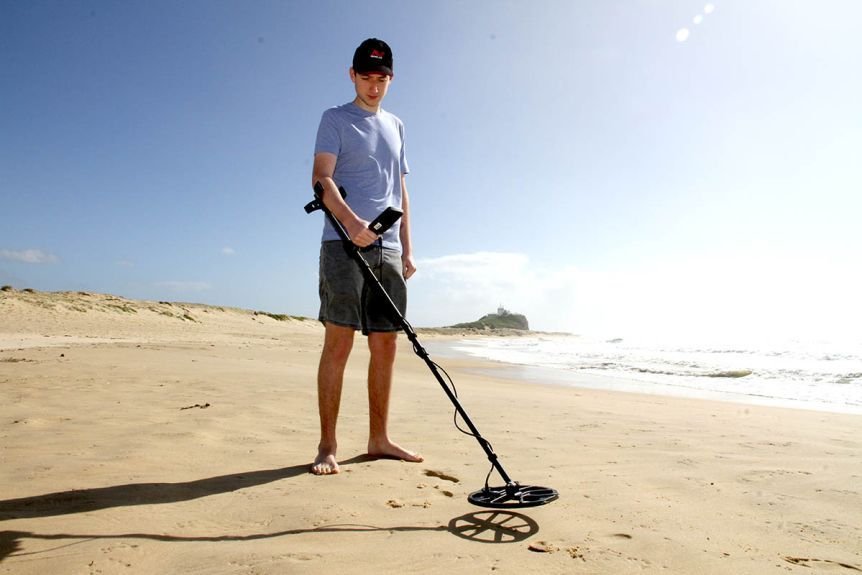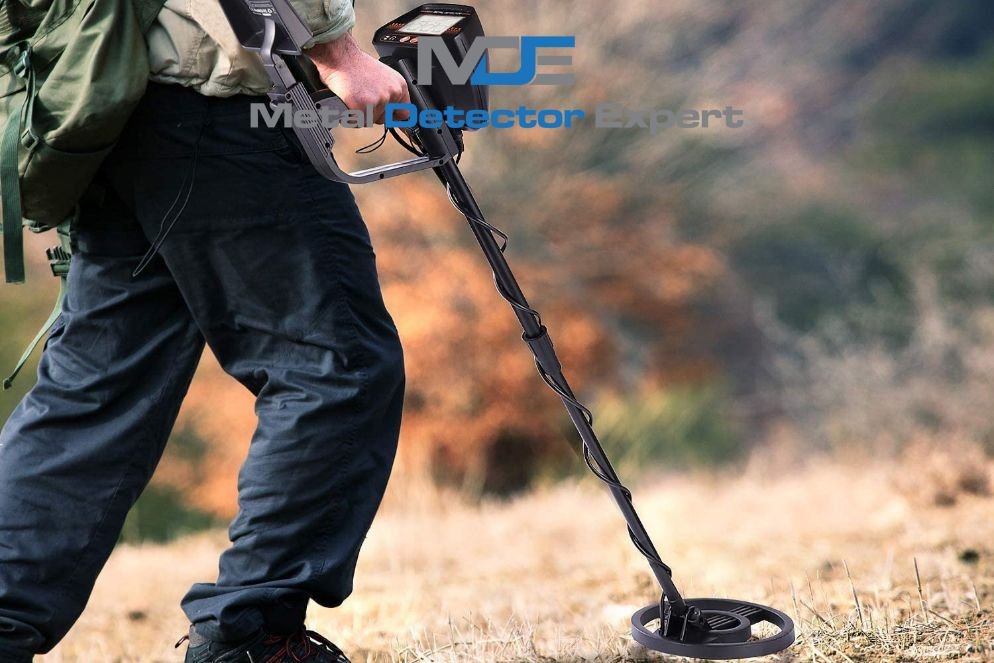What Depth Can My Metal Detector Detect At, How Far?
If your looking for the best metal detector on the market then your probably wondering just how deep your metal detector can detect and what buried treasures it can find.

Each kind of metal detector will differ on how deep they can detect underground, but it also depends on several external factors which can influence the depth of detection.
On average, a metal detector can usually detect objects up to 10 inches down in the ground, however, some models can detect up to 16 inches down if the object is large, this all depends on external factors too such as the object size and discrimination setting on your detector.
To help you understand how deep your metal detector can detect and what factors influence this, we have put together an informational guide below to answer all your questions.
Internal Factors Affecting Depth Detection In Your Metal Detector
So as we can understand how deep a metal detector can detect, we need to look at both the external and internal factors that can influence the level of depth.
The coil, frequency and technology of your metal detector can all have a strong impact on what you can find in the ground.
The Coil
Let’s start with the coil of your detector, at the end of your detector you will find a coil of wire which is responsible for transmitting electricity and creating a magnetic field.
The size of this coil directly affects what you can find in the soil, so if you have a large coil, you will be able to find larger targets buried deep in the ground, however, your large coil will be more likely to miss small targets as it will have reduced sensitivity.
Smaller coils on the other hand are cheaper and easier to use as they weigh less, making them easier to hold for long periods. These small sized coils are additionally the best for finding small targets such as gold nuggets.
It’s best to check what the manufacture suggests in terms of depth and sensitivity when it comes to individual models to get the most accurate understanding of what your detector can do.
Frequency
Higher frequency metal detectors will allow you to be more accurate in your findings than when compared to low-frequency models.
This is due to there shorter wavelengths which means they have less depth but more accuracy, making them great for finding treasures near the surface of the soil.
Lower frequency detectors on the other hand have a longer wavelength which means they are less accurate but allow you to detect deeper in soil than high-frequency machines, these models often tend to be a little cheaper for beginners and are the best for finding high conductive objects in the ground.
You can always try and go for a multi-frequency detector if you would like to have accuracy and depth in the same model.
The Technology Used
Metal detectors operate with two main types of technology; Beat Frequency Oscillator Technology (BFO) and Pulse Induction.
BFO
Beat Frequency Oscillator Technology is more commonly used in beginner metal detectors and operates with two coils; one that sends a low frequency out to detect and the other which alerts when detection is found.
This type of technology only works with swinging movements and tends to be cheaper than pulse induction technology, however, it does tend to have a habit of picking up false signals and being influenced by the soil type.
Pulse Induction
Pulse induction technology uses high voltage pulses in the ground to detect objects and can be able to tell you what type of metal you have detected by the level of voltage show, normally, higher conductive objects will mean a higher voltage.
You do not need to swing these metal detectors around for them to work and they are much more suitable for professional use. They are also not affected by the ground so may be less likely to give false signals when compared to BFO technology.
How Far Can An Average Metal Detector Detect?
Now we know the internal factors that affect depth detection in your detector, your probably wondering how far the average model can detect.

Typically, a metal detector can detect large objects up to 14/16-inches underground, however, for a small coin-like object on a beginner detector, you may be talking around 6-10-inches depending on the quality of the model brought and internal/external factors.
External Factors Affecting Depth Detection In Your Metal Detector
Many external factors can influence how far your metal detector can find objects in the ground.
We have listed the main ones below.
Object Size
The size of the object you are trying to detect matters, for example, most metal detectors can have a high detection depth if the object is large, however, might not be able to detect that deep if the object was small.
So the larger the object, the deeper your device can be able to detect!
Type Of Metal
Depth detection can also depend on the type of metal being picked up.
For example, metal types such as brass, copper and silver are very easy to detect at deeper depths and have high conductivity.
Stainless steel on the other hand has a low conductivity and would be much harder to detect at deeper depths in the ground.
The Ground
One of the most important factors in how far your metal detector can detect underground is the soil you are detecting on.
First of all, very heavy mineralised soil can produce a magnetic response in your detector, causing a loss of depth and potentially can affect how far your detector can read if there is a high level of iron in the ground.
You can buy special metal detectors which are meant for mineralised soil and tell you how mineralised the ground is to see if your depth is being affected.
The angled ground can also give missed readings and make it much harder for you to detect items below the surface than when compared to a flat surface.
Also consider whether the soil is wet or not. Wet soil can make it easier to detect objects in the ground as it increases the conductivity of them, although, wet soil can stop you from detecting objects that are deeper in the ground.
Summary Of The Factors That Can Affect How Deep Your Metal Detector Can Detect
Internal factors such as the coil size and external factors like the ground can affect how deep our metal detector can find objects, we have listed them out in a summary list below so as it is easy for you to remember.
- Coil size.
- Frequency.
- Technology.
- Metal type.
- Discrimination settings.
- Sensitivity settings.
- Objects overall size.
- The ground.

Frequently Asked Questions About How Deep a Metal Detector Can Detect
How far can the deepest metal detector go?
The deepest metal detectors can be able to detect objects at around 16-inches in-depth, however as we noted above, this can be changed by multiple factors external and internal on the device.
What is the difference between a VLF and a PI metal detector?
VLF is another name for low-frequency metal detectors and PI stands for pulse induction as we discussed above in our article. Very low-frequency metal detectors are great for detecting objects at deeper levels in the ground and is much more common in beginner models.
PI on the other hand is more accurate and can be used in any kind of soil, using voltage to detect objects.
Could I use a metal detector in the water?
Yes, you can use your metal detector around water as long as the coil is waterproof, never try to use a non-waterproof metal detector around water as it’s not safe.
How deep should my metal detector be if I want to find objects like gold?
Gold nuggets tend to be found not too deep in the ground, PI metal detectors serve to be the best for this work as they function better on the mineralised ground where gold typically is found.
Is the Depth of a Metal Detector Dependent on the Brand or Type?
When it comes to the best metal detector depth, it’s important to consider the brand and type. Some brands may offer better depth capabilities due to advanced technology and design. Additionally, certain types of metal detectors, such as pulse induction models, may provide deeper detection compared to others.
Last Words
To conclude our article, most metal detectors depending on the coil, frequency, technology and several external factors should be able to detect objects in the ground anywhere from 6-10-inches for beginner models up to 16-inches in others.
Always remember that your depth detection can be easily influenced by the types of metals you are finding and the ground you are detecting on.
